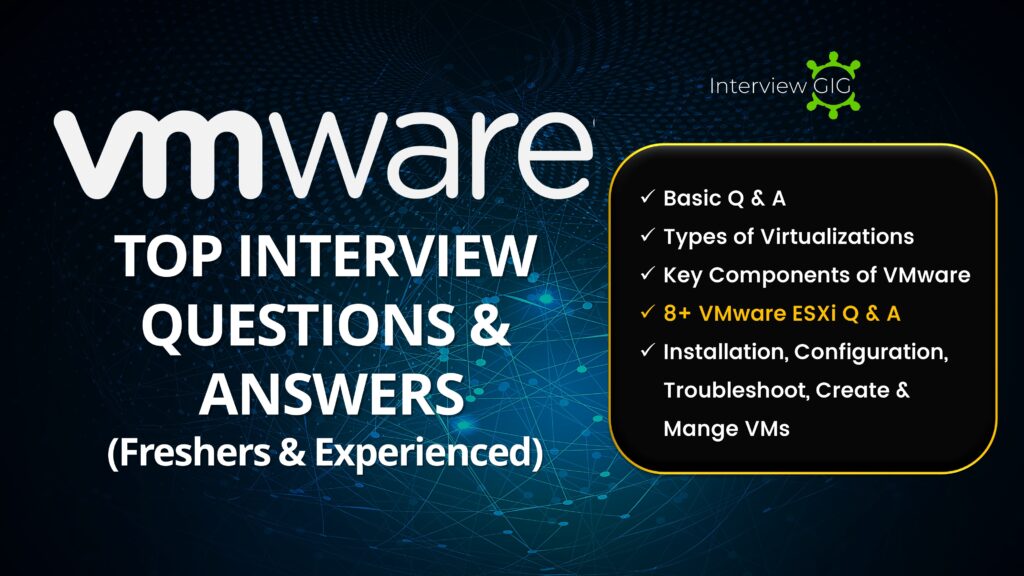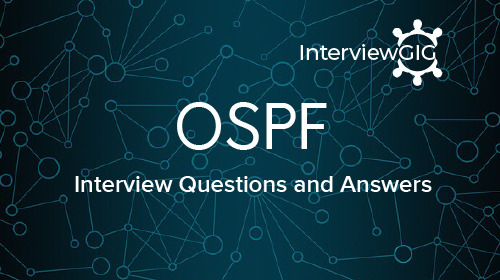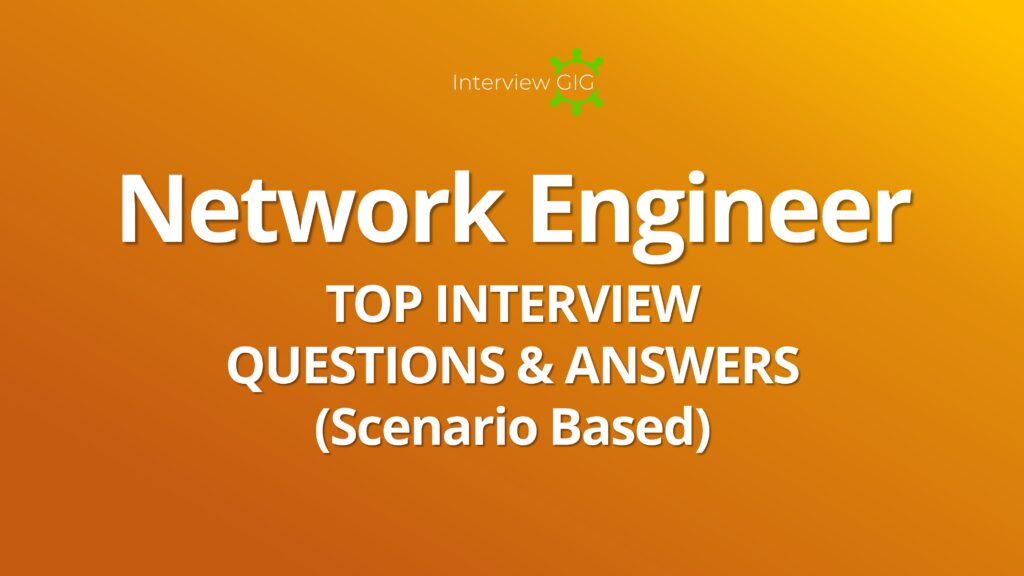What do you know about Cisco NX-OS?
Cisco NX-OS (Nexus Operating System) is a Modern data center-class networking operating system built with modularity, resiliency, and serviceability at its foundation. It is Robust operating system than Cisco-iOS. It supports distributed multithreaded processing on symmetric multiprocessors (SMPs), multi-core CPUs, and distributed data module processors.
It was based on the industry-proven Cisco SAN-OS Software, Cisco NX-OS helps ensure continuous availability and sets the standard for mission-critical data center environments. NX-OS uses a kickstart image and a system image, except for Nexus 9000.
What are Nexus Switches series?
CISCO MDS 9000 SAN switches: These switches are used to support Data Center SAN infrastructure.
Nexus 1000V series switches: It is software-based switch. It operates inside the VMware ESX hypervisor and utilizes the NX-OS Software.
Nexus 2000 series switches: It is used to utilizes FEX technology to provide flexible data center deployment models and to meet the growing server demands.
Nexus 3000 series switches: these switches deliver Layer 2 and 3 switching for general-purpose deployments, high performance computing, (HPC) high-frequency trading (HFT), massively scalable data center (MSDC) and cloud networks.
Nexus 5000 series switches: These switches are high density Layer 2 & 3, 10/40G ethernet unified ports. It supports any number of ingress source ports and any number of sources VLANs or VSANs.
Nexus 7000 series switches: It can provide an end-to-end data center architecture on a single platform, including data center core, aggregation, and access layer. These series switch offer high-density 10G, 40G, and 100 Gigabit Ethernet and bandwidth per slot up to 1.3Tbps. It supports for FEX, virtual Port Channel (vPC), VDC, MPLS and Fabricpat. It was specifically developed for the most mission-critical enterprise and service provider deployments.
Nexus 9000 series switches: It can operate Nexus OS or Application Centric Infrastructure (ACI) modes. It offers both modular (9500 switches) and fixed (9300 switches) 1G,10G, 40G, and 100 Gigabit Ethernet (GE) configurations. It supports for Fabric Extender Technology (FEX), virtual Port Channel (vPC), and Virtual Extensible LAN (VXLAN).
What is DCNM?
Cisco DCNM stands for Data centre network manager. It is a central management dashboard for data-center fabrics based on Cisco Nexus switches, MDS and Cisco UCS. The main purpose of DCNM is used to reduce the operation expanses by providing the efficient operations, monitoring and troubleshooting the Data Center network infrastructure. It provides a graphical user interface for viewing and managing switches, as well as a RESTful API to enable automation.
What is Fabricpath?
Fabric path is a Cisco proprietary switching protocol that in some ways replaces STP (Spanning Tree Protocols) and vPC (Cisco virtual port-channel). Fabric Path combines both Layer 2 and Layer 3 functions, thus giving simplicity of Layer 2 and also the intelligence of Layer 3.
What is FCoE?
FCoE stands for Fibre Channel over Ethernet. It is a technology that enables unified I/O on servers. Unified I/O is the ability to carry both storage and LAN data traffic on the same network adapter.
What is VDC?
VDC stands for Virtual Device Contexts. This feature available on Nexus 7000 only. VDC partitions a single physical device into multiple logical devices that provide fault isolation, management isolation, address allocation isolation, service differentiation domains, and adaptive resource management.
What is MPLS?
MPLS stands for Multiprotocol label switching. It is a one of the techniques for routing network packets. It is protocol-agnostic and speeds up packet forwarding and routing. In a traditional, non-MPLS network, packets are routed at each hop. It is mainly focused on IPv6 and Ipv4. MPLS works only between OSI Layer-2 (Data link Layer) and Layer 3 (Network Layer) and it’s often known as a layer of 2.5 protocol.
What is OTV?
OTV stands for Overlay Transport Virtualization. OTV is s an IP-based mechanism developed by Cisco to provide Layer 2 extension capabilities over any sort of WAN-based transport infrastructure. It means a control plane protocol is used to exchange MAC reachability information between network devices providing LAN extension functionality.
What is LISP?
LISP stands for Locator/ID Separation Protocol. It is a network architecture and set of protocols that implements a new semantic for IP addressing. It is used in SD-Access, providing overlay solution for SD-Access fabric.
What is VXLAN?
VXLAN stands for Virtual Extensible Local Area Network. It is an overlay Network Protocol. It is often used to tunnel virtual network infrastructure in virtualized environments. It was specifically designed for Layer 2 over Layer 3 tunnelling.
What are ANP?
ANP stands for Application Network Profiles. these are a group of EPGs and the policies that define the communication between them.
What vPC?
vPC stands for Virtual Port Channel. It is a port-channelling idea that extends hyperlink aggregation to 2 separate physical switches.
What is vPC peer link?
The peer-link is the most important component of the vPC domain. The peer link exchanges state information and carries control traffic between peer nexus switches.
What are Orphan Ports?
Orphan ports are unmarried attached devices that aren’t connected through a vPC, however nonetheless carry vPC VLANs.
Why use IS-IS as the fabric path control plane?
IS-IS (Intermediate System to Intermediate System) is very flexible and can be extended to support other functions with new type-length-values (TLVs). Itis also known as tag-length value and is used to encode optional information.
Why use VDC?
There are multiple logical roles (Core & Distribution on the same box)
- VDCs as a managed service to customers
- lab environment for later production use
- some features cannot co-exist in the same VDC (OTV and SVIs)
How to Creat VDC?
Hostname#conf t
Hostname(config)#vdc (name) > Creates a VDC and enters the VDC configuration mode.
Hostname(config-vdc)#allocate interface ethernet slot/port > Allocates one interface to the VDC.
What is the Cisco Nexus port profile?
It is a group of port configuration directives that can be applied to an interface via a single command. Port profiles provide a convenient way of provisioning interfaces on switches.
The definition of a port profile looks like below:
configure
!
port-profile type ethernet SERVERS
switchport
no shut
spanning-tree port type edge
switchport mode access
description IS-MISSING
state enabled
!
What is the use of UplinkFast?
This feature on Cisco switches helps in leaf-node switches and or switches at the ends of the spanning-tree branches to possess a functioning root port whilst maintaining more than one of the redundant or potential root ports in Blocking mode. Any time the primary root port uplink fails, another one blocked uplink instantly can be brought up for use.
How to Verifying the VDC Configuration in nexus 7000 series?
Follow below code:
show running-config {vdc | vdc-all}
show vdc [vdc-name]
show vdc detail
show vdc current-vdc
show vdc membership [status]
show vdc resource template
show resource
show vdc [vdc-name] resource [resource-name]
show mac vdc {vdc-id}
How many OSPF processes can be run in a virtual device context (VDC)?
There can be up to four (4) instances of OSPFv2 in a VDC.
How many syslog servers can be added to a Nexus 7000 series switch?
The maximum number of syslog servers configured is 3.
Which modules support FabricPath, FCoE, and FEX connectivity?
FabricPath is supported on all F1 and F2 modules. FCoE is supported on all F1 modules and F2 modules except on the 48 x 10GE F2 (Copper) module. FEX is supported on all F2 modules. Use this link from Cisco as a reference.
F2e module supports FCoE, FEX, and FabricPath. The F3 module (12 port 40GE) supports FEX, FabricPath, FCoE, OTV, MPLS and LISP.
Which modules support LISP, MPLS, and OTV?
All M1 and M2 modules support MPLS and OTV. LISP is supported only on the 32 x 10GE M1 module.
How many VDC’s can the Nexus 7000 support?
4 VDC’s (including 1 VDC for management) with SUP1 or SUP2; and 8 + 1 (management) VDC’s with SUP2E.
What are Cisco catalyst Switches?
The Cisco Catalyst switches offer a variety of wireless controllers, network switches, and wireless access points. Taking of the switches, these make use of IOS as their operating system.
What is use of static Pinning?
The static pinning feature allows groups of access interfaces to be bound to particular fabric (uplink) interfaces with the command pinning max-links. If a fabric interface fails, its pinned access interfaces are automatically shut down.
How To forward traffic from host interface to parent switch?
There are two way to forward traffic from host interface to parent switch:
static pinning: It allows you to bind a number of host interfaces to a fabric interface
Port Channel: It provides load balancing between the host interfaces and the parent switch. A fabric interface that fails in the port channel does not trigger a change to the host interfaces. Traffic is automatically redistributed across the remaining links in the port channel fabric interface.
Can you explain BackboneFast?
In the network backbone, or even core layer, a totally different method would be used to shorten STP convergence. It operates by having a switch actively determine whether or not alternative paths are available to the root bridge, in the event the switch detects an indirect link failure. Indirect link failures happen when a link which is not directly connected to a switch fails.
A switch detects an indirect link failure any time it receives inferior BPDUs from its designated bridge on both its very own root port or a blocked port.
How to configure the BackboneFast in Switch use the command?
Use the below command:
Switch(config)# spanning-tree backbonefast.





